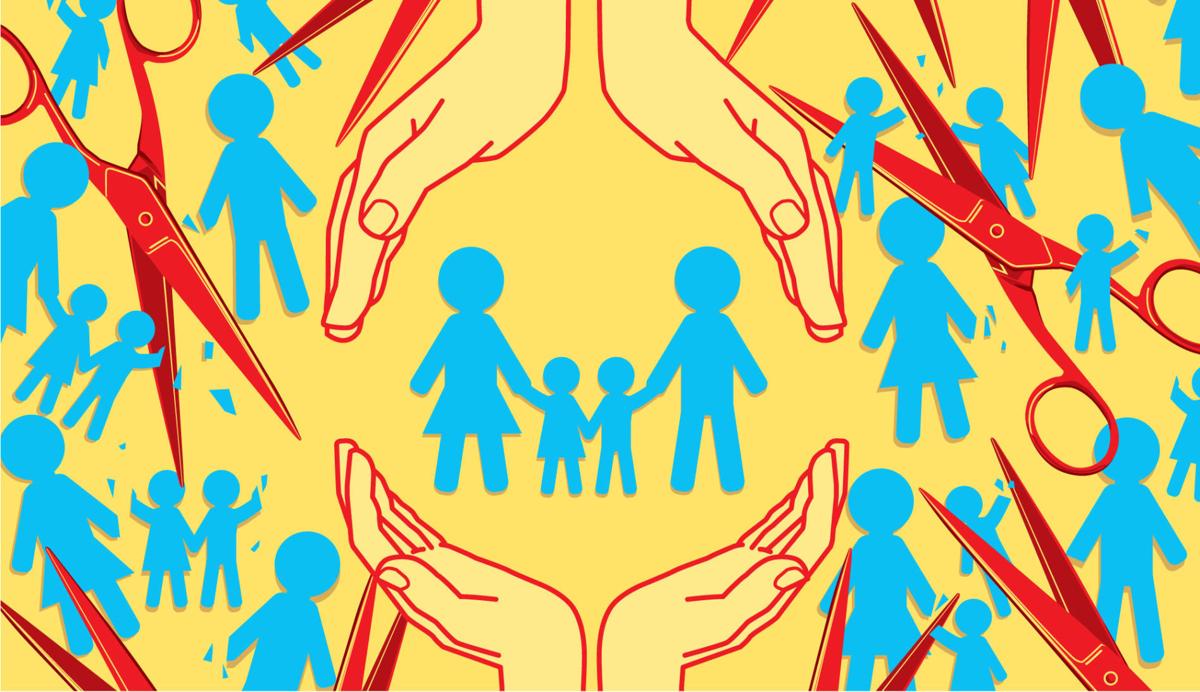The Arizona Daily Star published a three-part investigative series on Arizona’s foster care crisis this month, and after a year of reporting, interviews with more than 100 local, state and national experts and families connected to the child-welfare system, the root problems — and targeted solutions — are clear.
Arizona must do everything possible to prevent families from falling into crises so dire that children are removed and put into foster care.
Prevention is crucial — as is the most effective financial investment possible.
Roughly 14,300 Arizona children are in foster care, down from a high of 19,000 kids two years ago. Many live with relatives, others are in foster families or group homes. About half will eventually return to their families, but not before they’ve been exposed to the traumatic experience of being removed from their homes — even for an understandable reason — and living separated from their immediate family.
The need is urgent. Arizona’s reliance on child removal and foster care damages children, costs more money than helping a family before it reaches the crisis point and perpetuates cycles of poverty and dysfunctional families.
There is a better way. Arizona — specifically the Legislature — can make significant and lasting improvements in child safety. The answer isn’t simply “spend more,” it’s “spend more on programs that we know work.”
Child safety isn’t an island. It is deeply connected to housing stability, homelessness, employment, hunger, transportation, trauma, drug and alcohol addiction and crime. Recognizing these links, and how one influences another, is essential.
The stress of living in poverty — not knowing where you will sleep tonight, or find a meal — quickly becomes overwhelming, and that has a direct and lasting effect on a child’s health and development.
Arizona lawmakers can, and must, take concrete steps. In the coming weeks we will explore solutions our investigation uncovered, and we offer these initial recommendations:
Prevention: Arizona spends most of its limited child-welfare funds for foster care and family programs after a child has been removed from home. Instead, we should spend to keep families safely together — and Arizona knows how to do it. The Healthy Families program, experts say, is highly successful, in part because it is a five-year partnership between child-welfare workers and families. Parents attend classes, help ready their kids for school, and more.
In Pima County, the success rate is 96 percent, but only 15 percent of eligible families are able to participate. About 75 percent of state funds for Healthy Families have been cut since 2009.
Living in foster care, even with a caring family or a relative, negatively affects children. Research has shown that, absent serious abuse, children fare better with their parents, even under less-than-ideal circumstances, than in foster care.
Child care: The waiting list for state help to pay for child care is nearly 3,700 kids deep. It is no surprise that as Arizona slashed its general fund dollars for child-care subsidies, reaching zero in 2012, reports of child neglect skyrocketed.
Reports of neglect far outpace reports of child abuse. Often parents must decide whether to leave their children at home alone, or maybe with a neighbor, or lose their jobs and their income.
Helping low-income families pay for safe, flexible and reliable child care is a necessity in Arizona. It makes far more sense to prevent damage than to try to fix a family after it’s broken apart.
Spend wisely where it counts, on families: Arizona’s rules for receiving federal assistance through the Temporary Assistance for Needy Families (TANF) are among the strictest in the nation, which directly affects families who need help with food, rent, utilities and other necessities. TANF is a block grant to the states, intended to help with job training, child care and cash assistance. However, Arizona spends most of its TANF dollars on the Department of Child Safety to pay for foster families, adoption and child care for families already in the system.
Arizona should redirect its TANF money — $469 million in 2015 — to prevention programs, job training and child care for all low-income families. Draconian eligibility rules must also be changed to more realistically meet the immense needs.
Child safety and foster care are complicated subjects, and we will continue our examination of how to best serve Arizona’s vulnerable kids and families.





